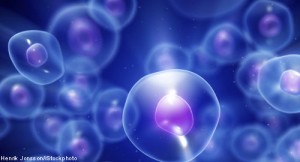 Every day, in each organism, millions of cells die and generate cell debris that must be efficiently and effectively removed via autophagy. This process is important, and genome-wide association studies have suggested that defects in autophagy are associated with inflammatory diseases, such as systemic lupus erythematosus (SLE) and Crohn’s disease. Further support of the role of autophagy in SLE pathogenesis comes from the fact that patients with lupus often have dead cells in their tissues. Scientists believe these dead cells trigger danger signals that can break tolerance and result in the generation of autoantibodies, such as the antibodies that are the hallmark of lupus. Likewise, researchers believe that if these dead cells could be cleared, then the danger signals would decrease, as would—possibly—the inflammation and pathology. New research takes this understanding to the next level, suggesting that successful autophagy is not just about whether or not the dead cells are taken up into phagosomes, but rather hinges on how the dead cells are processed.
Every day, in each organism, millions of cells die and generate cell debris that must be efficiently and effectively removed via autophagy. This process is important, and genome-wide association studies have suggested that defects in autophagy are associated with inflammatory diseases, such as systemic lupus erythematosus (SLE) and Crohn’s disease. Further support of the role of autophagy in SLE pathogenesis comes from the fact that patients with lupus often have dead cells in their tissues. Scientists believe these dead cells trigger danger signals that can break tolerance and result in the generation of autoantibodies, such as the antibodies that are the hallmark of lupus. Likewise, researchers believe that if these dead cells could be cleared, then the danger signals would decrease, as would—possibly—the inflammation and pathology. New research takes this understanding to the next level, suggesting that successful autophagy is not just about whether or not the dead cells are taken up into phagosomes, but rather hinges on how the dead cells are processed.
Jennifer Martinez, PhD, head of the Inflammation and Autoimmunity Group at the National Institute of Environmental Health Sciences, Research Triangle Park, N.C., and colleagues published the results of their investigation of the role of autophagy in lupus online on April 20 in Nature.1 They focused their effort on the cell digestion process known as LC3-associated phagocytosis (LAP). “The dogma for a long time has been that, if you can eat a cell, you can get rid of a cell,” explains Dr. Martinez in an interview with The Rheumatologist.
Her group looked at that assumption closely and focused their efforts on the LAP step of the dead cell clearance pathway. “LAP is somewhat of a rapid process,” she explains, adding, “It generally acts to inhibit inflammation.” The investigators studied LAP-deficient mice that develop an autoinflammatory, lupus-like syndrome. They found that defects in LAP, as opposed to defects in canonical autophagy, can cause SLE-like pathogenesis.
The investigators then asked whether repeated injection of apoptotic thymocytes could exacerbate the SLE-like phenotype seen in LAP-deficient mice. They found that repeated injection of dying cells into LAP-deficient mice (as opposed to LAP-sufficient mice) accelerated the development of SLE-like disease. In contrast, injection of dying cells into mice that were deficient for genes required for canonical autophagy did not result in defective clearance of dying cells, inflammatory cytokine production or SLE-like disease.
When the researchers examined spontaneous cytokine production in LAP-deficient and LAP-sufficient mice, they found that genotypes lacking LAP had increased levels of IL-1β, IL-6, IL-12p40 and IP-10 when compared with mice that produced LAP. The LAP-deficient mice also produced significantly lower levels of IL-10 than controls. The last observation is consistent with previous studies that have shown that mice lacking IL-10 experience markedly accelerated lupus-like disease.